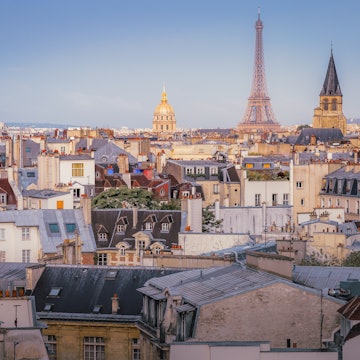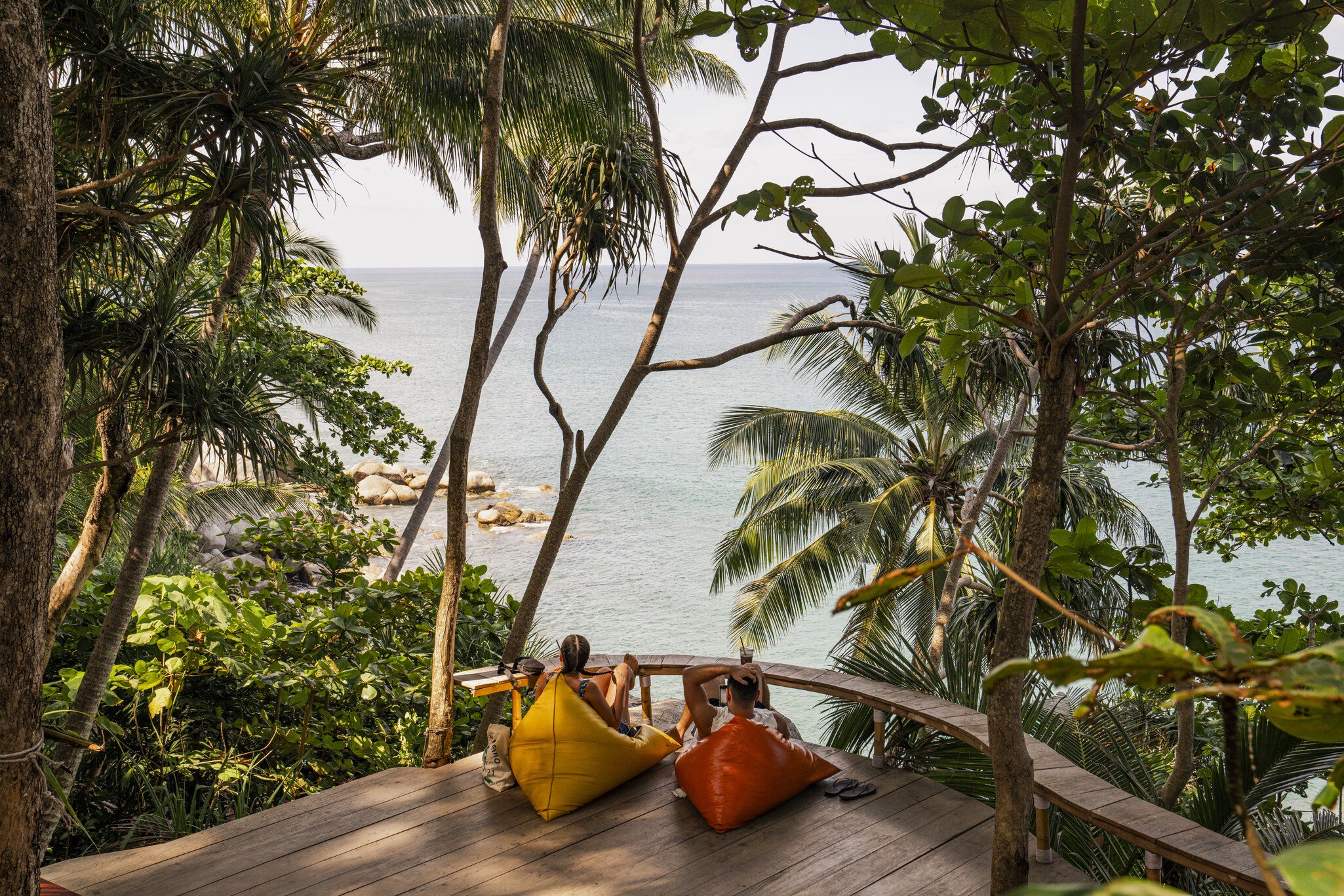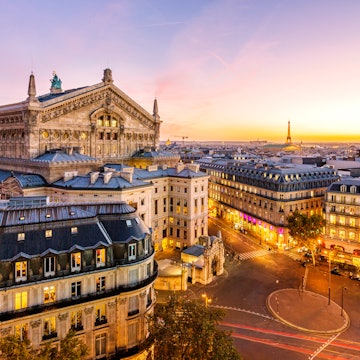

Parque Metropolitano La Sabana and Estadio Nacional in San JosƩ, Costa Rica's La Sabana neighborhood. Gianfranco Vivi/Shutterstock
San JosĆ© has certainly grown since it became the capital of Costa Rica in 1823. Known as āChepeā by locals, the city boasts world-class museums, creative cuisine, avant-garde art and culture.
Each neighborhood ā or barrio ā remains small and walkable, with its own distinct character. Hereās our pick of San JosĆ©'s best neighborhoods to visit.

1. Downtown
Best for major museums and local culture
Downtown San JosĆ© is the hub of Costa Rican culture and commerce. Hectic it may be, but itās still easy to museum-hop on foot.
Save money with a covering three museums: the contemporary Museo del Jade, home to the worldās biggest collection of American jade; the subterranean Museo de Oro Precolombino showcasing Costa Ricaās Indigenous peoples, and the fortress-like Museo Nacional de Costa Rica that dives into the countryās history.
On the Plaza de la Cultura ā perfect for people-watching ā the neoclassical Teatro Nacional was inspired by the Palais Garnier opera house in Paris. Take a tour of its grand auditorium or catch a performance, followed by a coffee-and-cake break at its beautiful .
Head west on the pedestrianized Avenida Central to the maze-like Mercado Central, where the stalls are piled high with tropical fruits, aromatic spices and made-in-China souvenirs. Itās been feeding San JosĆ© since 1880 and still serves traditional treats, such as chorreadas (corn pancakes).
Where to stay: You canāt get more central than the handsome 1930s overlooking the Plaza de la Cultura.
Where to eat: Head to in the market for delicious local dishes. Or for pan-Asian food, you canāt beat .

2. Barrio Escalante
Best for eclectic dining and nightlife
East of downtown, Barrio Escalante is the cityās hippest āhood, known for its diverse dining scene and lively nightlife.
Calle 33 is the main drag, bursting with bars and eateries from vegan cafĆ©s to brewpubs. And itās all within walking distance of downtownās sights and in stumbling distance of numerous lodgings.
There are specialty coffee shops, like and , creative restaurants in handsome period houses such as , communal dining at indoor-outdoor food courts, including and. In the mood for Mediterranean, Middle Eastern or Mexican? Youāll find it here.
Sample Costa Ricaās cerveza artesanal (craft beer) scene at the barrioās gastropubs. Try , the and for some of the best local brews.
Where to stay: Towering over Barrio Escalante, is a modern 29-story building with studios to two-bedroom apartments available for rent.
Where to shop: Shun the tourist tat with locally designed ceramics, woodwork and accessories at .

3. Barrio AmĆ³n
Best for architecture and atmosphere
A 10-minute walk north of downtown, historic Barrio AmĆ³nās charming streets are made for wandering.
Itās a rich mix of architectural styles and many of its pastel-colored mansions ā dating from the late 19th century coffee boom ā now house boutique hotels, cool cafĆ©s and cutting-edge art galleries.
is one such indie gallery with the tagline āarte + pensamientoā (art + thought). Its faƧade is covered in regularly changing murals and exhibitions that focus on social issues such as feminism and migration. Head to for the work of local designers.
As part of a national program, the state-run Parque ZoolĆ³gico Nacional SimĆ³n BolĆvar closed its doors in 2024; now the site is being transformed into Costa Ricaās first Urban Natural Park.
Forested areas are being restored, the botanical gardens are being revamped, and former animal enclosures are being reinvented as recreational and educational spaces. Itās slated to open in phases between 2025 and 2028.
Where to stay: Set in a restored mansion, is overflowing with vintage charm and quirky modern art.
Where to eat: Head to for a contemporary take on Costa Rican fare in a historic setting, for Vietnamese-inspired cuisine and culture, and the colorful for coffee and churros.

4. La Sabana
Best for green space and family fun
Escape the urban jungle in Parque Metropolitano La Sabana, the cityās green lung built on the site of its first international airport.
Stroll along the web of walking paths shaded by native trees, jog along the racetrack ā thereās an inline skating rink, too ā or join the locals in a game of baseball or volleyball.
And thereās fun for all the family, with an old-school playground and picnic benches.
Looming over the western end of the park is the state-of-the-art , which hosts the countryās national soccer team and big-name concerts. To the east, the Museo de Arte Costarricense is in a Spanish-style former airport terminal, with rotating exhibitions and a tranquil sculpture garden.
The perpetually busy Paseo ColĆ³n heads east towards downtown, and thereās easy access to Juan SantamarĆa International Airport.
Where to stay: North of the park, offers comfortable modern lodgings and a pool, and is a charming, wallet-friendly guesthouse. In a peaceful spot, a 15-minute walk east of the park, the boutique is in a converted Victorian mansion.
Where to eat: is a sizable brewpub in front of the National Stadium. The ever-popular serves up a mix of comida tĆpica and juicy burgers until late.

5. San Pedro
Best for partying
Around 5km east of downtown, sprawling San Pedro is home to the Universidad de Costa Rica ā known as āLa U.ā Thereās no shortage of boisterous bars and budget-friendly eateries around its main campus, and itās a fun place to stay and hang out with young Ticos.
During the day, you can explore the campus and check out its Museo de Insectos and or shop at wallet-friendly .
After classes, Calle de la Amargura ā or just āLa Calleā ā becomes a magnet for young partygoers. Expect overflowing dance floors, loud music and lots of shots. If youāre looking for something a little quieter, try .
Where to stay: has everything from dorms to family rooms at prices that are hard to beat.
Where to eat: Along La Calle, and offer creative vegan and vegetarian fare; speaks for itself.

Plan with a local












